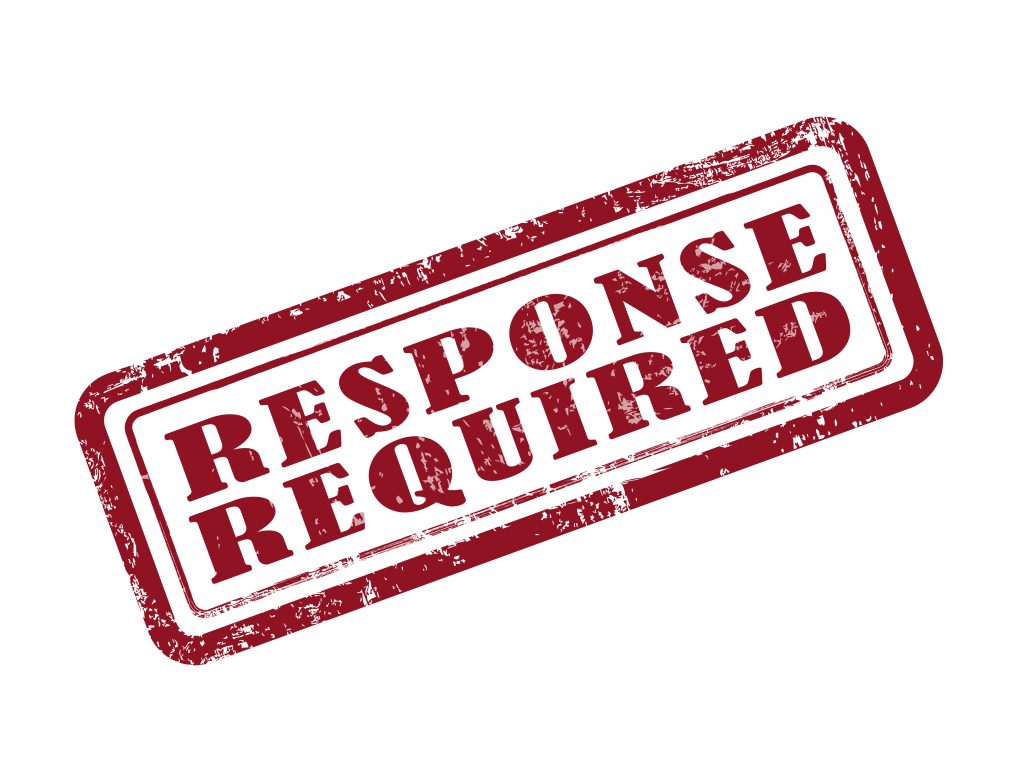“Petitioner appealed to the Federal Circuit with a 54-page principal brief and a 38-page Reply Brief. Apple’s and Cisco Systems’ briefs totaled 110 pages. Less than two weeks after oral argument, a Federal Circuit panel issued a decision that stated, in toto, “AFFIRMED. See Fed. Cir. R. 36.”
 The Supreme Court has requested that Apple and Cisco file responses to Straight Path IP Group, LLC’s (SPIP’s) petition for certiorari in Straight Path IP Group, LLC v. Apple Inc., et al. The petition presents the following question:
The Supreme Court has requested that Apple and Cisco file responses to Straight Path IP Group, LLC’s (SPIP’s) petition for certiorari in Straight Path IP Group, LLC v. Apple Inc., et al. The petition presents the following question:
Whether Rule 36(e) of the Federal Circuit’s Rules of Procedure violates the Fifth Amendment by authorizing panels of the Federal Circuit to affirm, with no explanation whatever, a District Court judgment resolving only issues of law.
SPIP filed its petition on August 23 and Apple and Cisco filed waivers of their right to respond on September 4 and 5, respectively. But on September 18, the Court requested that both companies file their responses by October 18.
As Nathan Lewin of Lewin & Lewin LLP, who filed the petition on behalf of SPIP, explained last month, the case involves four patents claiming a new method for establishing point-to-point communications over a computer network. The patents were upheld as valid by the Patent Trial and Appeal Board (PTAB) and by two decisions of the Court of Appeals for the Federal Circuit. As further explained in the petition:
Claiming infringement of its patents, petitioner sued Apple and Cisco Systems in the Northern District of California, the defendants’ home district. In an unreported decision, the District Judge granted summary judgment to Apple and Cisco Systems. He ruled that statements made by petitioner’s counsel during oral argument in one of petitioner’s successful appeals to the Federal Circuit narrowed the petitioner’s patent claims so that the Apple and Cisco systems did not infringe petitioner’s patents. The District Court decision raised only issues of law. Petitioner appealed to the Federal Circuit with a 54-page principal brief and a 38-page Reply Brief. Apple’s and Cisco Systems’ briefs totaled 110 pages. Less than two weeks after oral argument, a Federal Circuit panel issued a decision that stated, in toto, “AFFIRMED. See Fed. Cir. R. 36.”
Judge Paul Michel, IPWatchdog CEO and Founder Gene Quinn, and others have lamented the Federal Circuit’s increased use of Rule 36 in recent years. Judge Michel recently characterized the use of Rule 36 for cases with any merit as “a dereliction of duty.” While he conceded that its use has been necessitated by the higher burden of cases coming from the PTAB and the lower courts, he said that “for any case with any merit, there should be some opinion. I consider it a dereliction of duty [for the judges] not to explain their reasoning in at least three to four pages in order to remain consistent with their mission to clarify the patent law. It’s very hard to justify.”
Quinn has called the use of Rule 36 “unprecedented abuse” and a “racket.”
Parties interested in filing amicus briefs in the case now have until October 18. However, Supreme Court Rule 37(2) requires 10 days’ notice to counsel for the respondents of intent to file and seek consent. (The petitioners have filed a “blanket consent” so amici need not seek their approval.)
If the respondent refuses to consent, amici must cover their proposed amicus brief with an application for leave to file. Under Rule 37(6), the brief will have to contain the required certification that it has not been funded or written, in whole or part, by any party, and identify anyone other than the amicus who made a “monetary contribution.”
Image Source: Deposit Photos
Vector ID: 72813317
Copyright: kchungtw

![[IPWatchdog Logo]](https://ipwatchdog.com/wp-content/themes/IPWatchdog%20-%202023/assets/images/temp/logo-small@2x.png)

![[Advertisement]](https://ipwatchdog.com/wp-content/uploads/2024/04/Artificial-Intelligence-2024-REPLAY-sidebar-700x500-corrected.jpg)
![[Advertisement]](https://ipwatchdog.com/wp-content/uploads/2024/04/UnitedLex-May-2-2024-sidebar-700x500-1.jpg)
![[Advertisement]](https://ipwatchdog.com/wp-content/uploads/2024/04/Patent-Litigation-Masters-2024-sidebar-700x500-1.jpg)

![[Advertisement]](https://ipwatchdog.com/wp-content/uploads/2021/12/WEBINAR-336-x-280-px.png)
![[Advertisement]](https://ipwatchdog.com/wp-content/uploads/2021/12/2021-Patent-Practice-on-Demand-recorded-Feb-2021-336-x-280.jpg)
![[Advertisement]](https://ipwatchdog.com/wp-content/uploads/2021/12/Ad-4-The-Invent-Patent-System™.png)






Join the Discussion
5 comments so far.
Anon
September 26, 2019 05:27 pmThe remedy for patent matters that are controlled by the express words of Congress (and apart from any other use) is to follow the words of Congress (and affirmatively provide the opinion of the reviewing court — as opposed to the opinion of the court below).
Pro Say
September 26, 2019 01:17 pmHmmmm … I’m wondering just what SCOTUS could do with Rule 36 if they agree it’s unconstitutional / overused (which it is) …
1. Ban its use?
2. Limit it’s use (but how?)?
3. Require a minimum number or words / pages for each decision?
4. Something else entirely?
Anyone else have any thoughts on a remedy?
Anon
September 26, 2019 10:38 amAs much as I pan “that other blog” (for very good reasons), I want to point out that Prof. Crouch has long been “against” the over-use of Rule 36 in patent cases.
Valuationguy
September 26, 2019 10:08 amWonder if Apple’s brief will be influenced at all due to the fact that it has a nearing $450M judgment against it based on a CAFC Rule 36 in the Virnetx (Apple 3) case…particularly in light of the fact that Apple has no concrete liability to Straight Path (as yet).
Talk about asking the fox to guard the hen house…..
(Note: I highly disagree with the CAFC’s more liberal use of Rule 36 over the past 4 years…but the irony of the SCOTUS asking specifically for Apple’s opinion on this issue is too much NOT to comment on.)
Alan Burnett
September 25, 2019 10:03 pmThat sounds like an egregious fact pattern. Anyone who thinks they are going to get a fair shake asserting against Apple in N.D. Cal is in for a world of disappointment. The fact that the Fed. Circuit is asleep at the switch half the time isn’t helping.